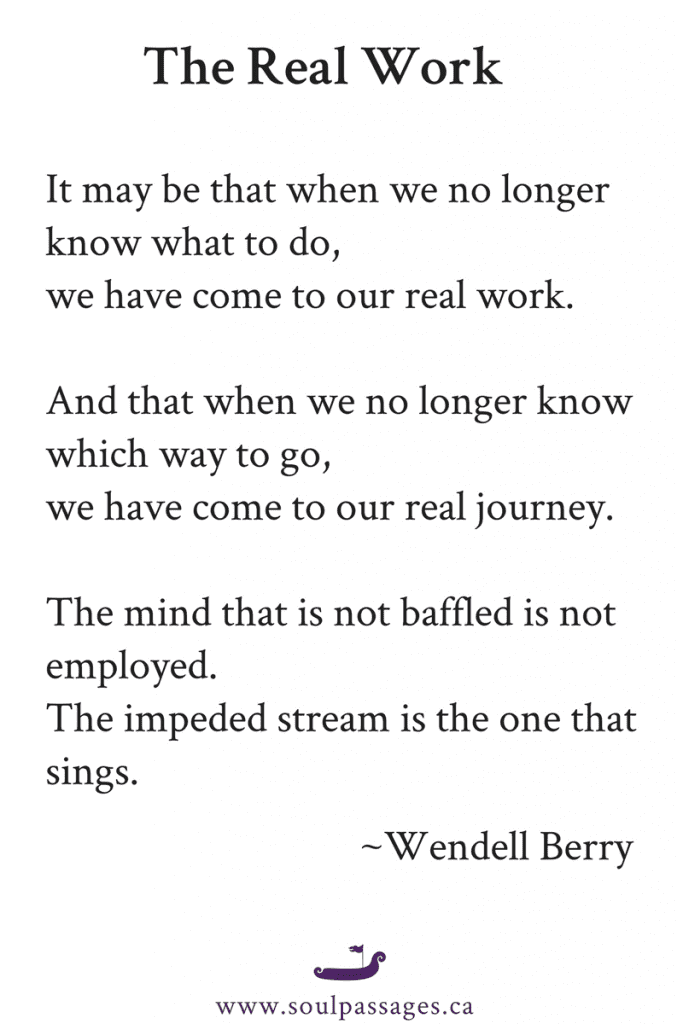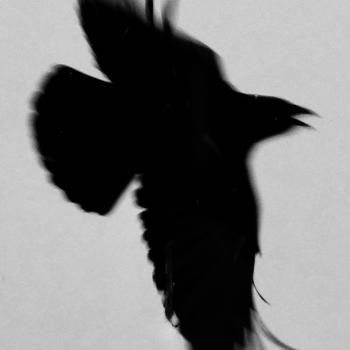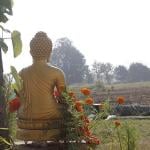
“The mind that is not baffled is not employed.”
My first real baffling encounter with Great Uncertainty (aka, Great Doubt) came near the beginning of my Zen practice, probably in about ’78 or ’79. I was walking home from a sesshin with another student and I asked him, “How’d your sesshin go?”
He looked at me with the kind of rawness that takes a seven-day sesshin to reveal, and said, “I don’t know shit. I really don’t know shit. I don’t know shit.”
In the recent translation of The Letters of Chan Master Dàhuì Pujue, translators Jeffrey L. Broughton and Elise Yoko Watanabe offer nine themes, motifs, that emerge in the letters about how to do keyword practice (話頭 huàtóu, Japanese, watō). I’ve been sharing them on the Vine of Obstacles: Online Support for Zen Training for students working with keywords, and I’ll also be sharing them here for others who might be interested. Close study of an ancient text can help both students and teachers notice details of the method and refresh their practice spirit.
If you are working with a keyword with another teacher, consult with them, of course, and rely primarily on their guidance.
In this third post in the series, I’ll unpack Dàhuì’s second theme, what Broughton and Watanabe translate as “uncertainty,” but is more commonly referred to in Zen circles as “doubt.” I hope you won’t be too baffled by my using both terms in this post.
As you may know, many of the great teachers in our tradition – from Fayan to Hakuin to Yamada Roshi – have taught brilliantly about how uncertainty is crucial to awakening. (1) It is a bitter truth in the current pandemic that the uncertainty of our world is lucidly clear. At such times when our personal narratives and societal narratives are simultaneously disturbed, destabilized, and disrupted, the possibilities for awakening are multiplied.
Here’s the text:
Theme 2: You must generate a singular sensation of uncertainty
Broughton and Watanabe: “The term ‘uncertainty’ (Chinese, yí, 疑) refers to the sensations of hesitation, vacillation, wavering, misgiving, having qualms about something, apprehension—even dread and angst—that develop within the round of daily activities. In ‘doing [diligent practice] in this way’ the practitioner is to merge, to amalgamate, all these myriad instances of uncertainty and apprehension into one big sensation of uncertainty and apprehension about the [keyword], and only about the [keyword]. This merger of all the little uncertainties into a monolithic, massive uncertainty does not allow for the production of any new tiny, discrete uncertainties. Once this featureless ‘[keyword]-uncertainty’ mass is smashed to smithereens, one is liberated:
Letter #29.1: “The thousands upon thousands of instances of uncertainty are just the ‘single uncertainty.’ When [the single] uncertainty about the [keyword] is smashed, the thousands upon thousands of instances of uncertainty are smashed at the very same time. If the [keyword] isn’t smashed, then keep pressing hard with it (emphasis added). If you discard the keyword, and produce uncertainty about some other example of the written word, or produce uncertainty about the sutra teachings, or produce uncertainty about the cases of the ancients, or produce uncertainty within the troublesome defilements of daily activities, it will all be of the coterie of the Evil One Māra.” (2)
A few points for clarification:
What is Great Doubt?
Jeff Shore, in his book, Great Doubt: Practicing Zen in the World, translates and comments on a text by Boshan (1575-1630), a Zen master in the Cáodòng school (Japanese, Sōtō). That’s significant because in today’s Western Sōtō Zen, Great Doubt is thought of as something that those crazy Rinzai people do. In any case, in his introduction to Great Doubt: Practicing Zen in the World, Shore writes, “Great doubt is an intense wonder, a powerful curiosity that opens us up.” (3)
That’s quite a positive expression of Great Doubt. There is another side: “apprehension—even dread and angst.”
“I don’t know shit.”
Bankei defines doubt like this:
“Suppose you lost your only surplice, the one you were given when you became a monk, and you were unable to find it no matter how hard you looked. You’d search and search without let-up. You’d be unable to stop searching for even an instant. That would be real doubt.” (4)
So doubt is like losing something really precious – your grandmother’s ring, your grandfather’s bottle opener, the buddha nature – and the doubt we’re talking about is that bodily sensation that propels you to search frantically. The important point here is to apply the keyword (e.g., mu or who) precisely where you experience the queasy feeling. We apply the key word exactly to/in/with our vulnerabilities, concentrating all of your many splintered doubts and vacillations into a great ball of doubt. The doubt.
Some readers will surely align this with Wúmén’s essential commentary on the mu kōan (which you’ll notice is quite focused on the keyword and not at all on the kōan) when he says, “Use three-hundred and sixty joints and eighty-four thousand hair follicles. Go through the body, raise a single doubt sphere, participate in the single word mu.” (5)
Applying the keyword to our vulnerabilities, including our presently apparent coronavirus exposure, and kneading all of the little doubts into the great mass of doubt, are very important skills. When infused by the power of inquiry, bringing the keyword into the thought/feeling in the very place in the body mind where the thought/feeling is arising, might just open the non-dual door of awakening… right in the heart of our vulnerability.
One vulnerability that practitioners frequently encounter is the thought, “I’m not doubting well enough. I don’t have a great enough doubt.” That’s exactly where to apply the keyword, including this doubt with all the many doubts (I’ll be returning to this topic in the next post).
Bankei warns, though, that this doubt must be authentic, not something done in order to be a good and faithful student:
“People nowadays say they need to have doubt because people in the past did. So they cultivate a doubt. But that’s merely an imitation of a doubt, not a real one, so the day never comes when they arrive at a real resolution.” (6)
Real doubt is “I don’t know shit.” It arises when we sincerely take up the keyword, a very simple word like mu or no and we have to admit that we don’t know what no is. Or even though we’ve been hearing our whole lives, when put on the spot in a one-to-one meeting with a teacher, we have to admit that we don’t know who hears.
Amazing! Wonderful! Nauseating!
And then, not sparing life or limb, throwing ourselves into the search, raising the keyword with intensity. This intensity knows no school. Dōgen, for example, verified the significance of such wholehearted inquiry, saying, “We should make the columns ask it; we should ask the columns. We should make the buddha nature ask it.” (7)
Zen master Zhen put it this way: “Fully trust, you’ll fully doubt; fully doubt, you’ll fully awaken.” (8)
Go on pursuing to the ultimate
Dàhuì said in the letter quoted above, “If the [keyword] isn’t smashed, keep pressing hard with it.”
A couple translation points will help give some nuance to the instruction here. Broughton and Watanabe select an aggressive way to translate 破 as “smash.” “Break” or even “wear out” would also be fair renderings.
The last phrase, “keep pressing hard with it,” can also be seen a bit differently. 崖將去: 崖 is precipice. 將 is wishing. 去 is to go.
Mujaku Dōchū, an important commentator on Dahui’s letters, expresses the meaning of “keep pressing hard with it” like this: “A colloquialism: go on pursuing to the ultimate—an incisive examination of principle is like going right up to the edge of a precipice.” (9)
So in the passage above, the characters could be rendered, “If the [keyword] isn’t broken, then continue pursuing the ultimate.”
Or “If the [keyword] isn’t worn through, then continue aspiring to go to the edge of the cliff.”
In any case, just sit in the corner where you cannot move an inch.
Why? Here’s Hakuin with the last word:
“If you are assiduous in practicing the essential teachings I have given you and are never remiss, not only will it cure you of meditation sickness and relieve you of fatigue and spiritual torpor; it will also enable those burdened with the mass of years of accumulated doubt and struggling to reach the final crowning matter of the Zen school to experience a joy so intense they will find themselves clapping their hands ecstatically and whooping in fits of laughter. Why?
‘When the moon reaches the summit,
Shadows disappear from the wall.’” (10)
(1) See “Great Faith, Great Doubt, Great Determination,” by Koun Yamada Rōshi. Also see The Chan Whip Anthology A Companion to Zen Practice, trans. Jeffrey L. Broughton with Elise Yoko Watanabe.
(2) The Letters of Chan Master Dàhuì Pujue, “Introduction: Recurring Motifs in Huatou Practice,” trans. Jeffrey L. Broughton and Elise Yoko Watanabe.
(3) Boshan, Great Doubt: Practicing Zen in the World, trans. Jeff Shore, 1.
(4) Ibid., 5-6
(5) Wúmén Huìkāi, No Gate Barrier, “Case 1: Zhàozhōu’s Dog,” unpublished trans. Dosho Port.
(6) Boshan, 6.
(7) Eihei Dōgen, Shobogenzo Bussho, trans. Carl Bielefeldt.
(8) Boshan, 2.
(9) Boshan, note 35.
(10) Hakuin Ekaku, Wild Ivy: The Spiritual Autobiography of Zen Master Hakuin, trans. Norman Waddell, 121-122.
Dōshō Port began practicing Zen in 1977 and now co-teaches with his wife, Tetsugan Zummach Sensei, with the Vine of Obstacles: Online Support for Zen Training, an internet-based Zen community. Dōshō received dharma transmission from Dainin Katagiri Rōshi and inka shōmei from James Myōun Ford Rōshi in the Harada-Yasutani lineage. Dōshō’s translation and commentary on The Record of Empty Hall: One Hundred Classic Koans, is now available (Shambhala). He is also the author of Keep Me In Your Heart a While: The Haunting Zen of Dainin Katagiri. Click here to support the teaching practice of Dōshō Rōshi.












